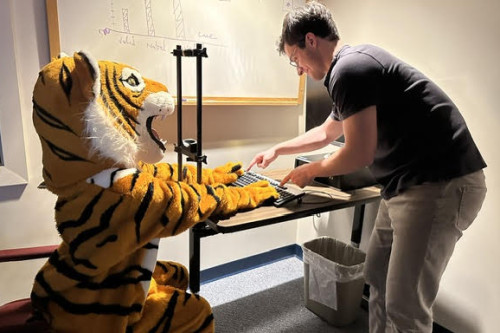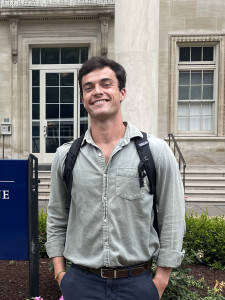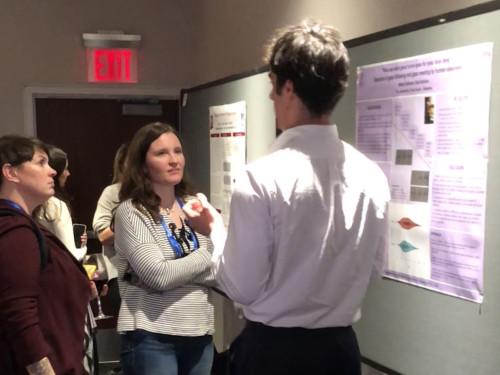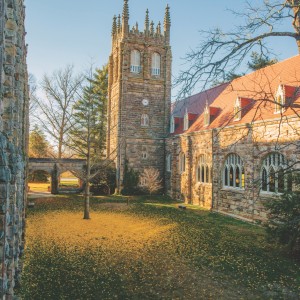Detection of gaze following and mutual gaze by human observers
Research Profile: Rob Sullivan, C’25; with contributions from Myers Bell, C’27, and Garrett Parker, C’23
 We know that the ability to perceive the human gaze evolved to support social interactions and cooperation. However, we do not know whether it is easier to meet or follow the gaze of another person. To distinguish between these two possibilities, Teaching Professor of Psychology Maria Falikman and her research students developed a novel experimental paradigm. Specifically, human participants were instructed to respond to gaze shifts in human faces on a computer screen.
We know that the ability to perceive the human gaze evolved to support social interactions and cooperation. However, we do not know whether it is easier to meet or follow the gaze of another person. To distinguish between these two possibilities, Teaching Professor of Psychology Maria Falikman and her research students developed a novel experimental paradigm. Specifically, human participants were instructed to respond to gaze shifts in human faces on a computer screen.
Their results imply that the detection of gaze following in others is more efficient than the detection of a mutual gaze. This might have evolutionary relevance since the human gaze acts as a spatial cue towards vital information. Still, they observed individual variability and also a lack of awareness about one's performance on the gaze direction detection task.
Rob Sullivan, C’25, was a research assistant for the project in the Easter semester of 2024, during which time he ran ~50 participants individually in the lab, using response time registration and eye-tracking equipment. He also prepared data for the statistical analysis and did primary data cleaning using a custom script developed in collaboration with senior computer science major Garrett Parker, C’23.
~50 participants individually in the lab, using response time registration and eye-tracking equipment. He also prepared data for the statistical analysis and did primary data cleaning using a custom script developed in collaboration with senior computer science major Garrett Parker, C’23.
Wanting to present the most complete study possible at the conference, Falikman brought a neuroscience major, Myers Bell, C’27, onto the project in the fall of 2024 to assist with final data collection in advance of the presentation. Unfortunately, her name could not be included in the publication due to the conference timeline, but her contribution was acknowledged in the presentation titled “‘Now See What Good Turns Eyes for Eyes Have Done': Detection of Gaze Following and Gaze Meeting by Human Observers,” which was presented at the 65th Psychonomic Society meeting in New York in November 2024.

Sullivan is pursuing premedical studies as a post-baccalaureate student at the University of Virginia.

